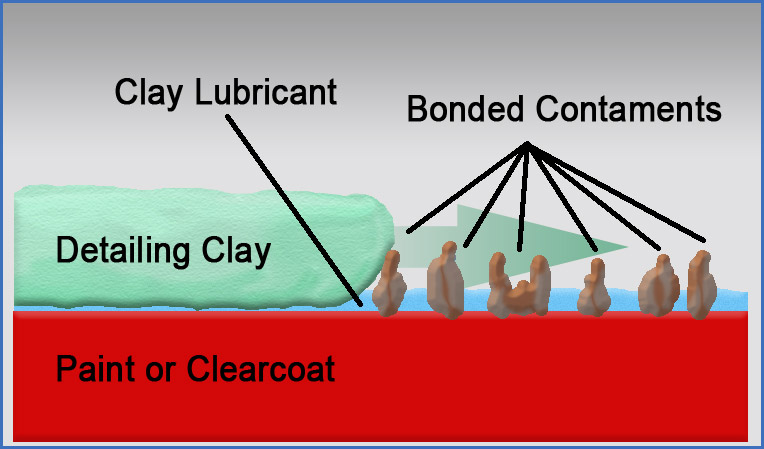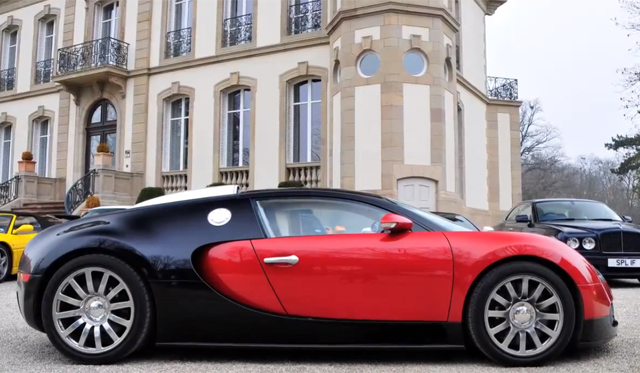
Using detailing clay to clay your car's paint will,
1: Claying safely removes Above Surface Bonded
Contaminants
2: Claying paint enable your choice of wax or paint sealant to better bond or adhere to the paint.
3: Claying paint restores a silky, smooth, clean surface.
4: Claying paint makes polishing easier, more effective and safer.
2: Claying paint enable your choice of wax or paint sealant to better bond or adhere to the paint.
3: Claying paint restores a silky, smooth, clean surface.
4: Claying paint makes polishing easier, more effective and safer.
Let’s take a little deeper look at these benefits...
1: Claying safely removes Above Surface Bonded Contaminants
Over time, if your car is parked outside for any length of time during each day then any dirt or air-borne contaminants that land on the paint will tend to bond to the paint if they are not removed in a timely manner. Once they bond to the paint some of them won't come off just from normal washing. This is where detailing clay comes into the picture.
Detailing clay uses special abrasives that have the ability to basically sand-off any contaminants sitting on top of the surface without installing scratches into your car's paint at the same time. I
n the old days, people would use coarse rubbing compounds to remove above surface bonded contaminants and while these types of products would work they would also,
Instill scratches into the paint
Remove perfectly good paint
That's two negative things you don't want to do your car's precious clear layer of paint.
2: Claying paint enable your choice of wax or paint sealant to better bond or adhere to the paint.
Claying paint restores a clean surface so a coating of wax or paint sealant can maximize the bond between the paint and the protection ingredients. This helps to insure the wax or paint sealant coating will last a long time and thus protect a long time, and this is something all people want out of their choice of car wax or paint sealant.
The number one question I hear people ask on the topic detailing usually goes like this,
"How long will brand X Car Wax last?"
And the technically correct answer is,
"It depends upon how well the surface is prepared to
accept the wax"
You see, a good chemist will create a car wax or paint
sealant formulation to bond or adhere to car paint, not a layer of
dirt. When contaminants build-up over the surface they create a layer or film
of gunk, a mixture of whatever is floating around in the air where you live and
park your car. The protection ingredients cannot get to the paint until this
layer of contaminants is first removed.
If above surface, air-borne contaminants are present on the paint when a wax or paint sealant is applied, the wax or paint sealant will not last very long because it won't be able to bond very well to the top coating of the actual paint itself.
3: Claying paint restores a silky, smooth, clean surface
I think we can all agree that a great looking paint job is a glossy looking paint job and gloss comes from a smooth surface.
When air-borne contaminants build-up on your car's finish they create an irregular surface or texture that feels rough or bumpy to the touch. This un-even, bumpy surface due to above surface bonded contaminants reduces gloss. Claying your car's paint will remove the contaminants, this restores a smooth surface and this in return restores a high gloss finish
If you're a detailer, claying restores smoothness and this shows up to your customer's eyes as gloss and makes for happy customers.
4: Claying paint makes polishing easier, more effective and safer
In the context of this section, when we say polishing, we mean abrading the paint to remove below surface defects and/or refine the existing finish to a higher level.
If above surface, air-borne contaminants are present on the paint when a wax or paint sealant is applied, the wax or paint sealant will not last very long because it won't be able to bond very well to the top coating of the actual paint itself.
3: Claying paint restores a silky, smooth, clean surface
I think we can all agree that a great looking paint job is a glossy looking paint job and gloss comes from a smooth surface.
When air-borne contaminants build-up on your car's finish they create an irregular surface or texture that feels rough or bumpy to the touch. This un-even, bumpy surface due to above surface bonded contaminants reduces gloss. Claying your car's paint will remove the contaminants, this restores a smooth surface and this in return restores a high gloss finish
If you're a detailer, claying restores smoothness and this shows up to your customer's eyes as gloss and makes for happy customers.
4: Claying paint makes polishing easier, more effective and safer
In the context of this section, when we say polishing, we mean abrading the paint to remove below surface defects and/or refine the existing finish to a higher level.
By removing any above surface bonded contaminants first, you
enable your polish and pad to immediately go to work on the paint with nothing
on the surface in the way.
You make the polishing action smoother as your polish and
pad will move over the surface easier with less potential for hopping or
grabbing.
You reduce the potential for accidental marring of the paint
during the buffing process since there are not contaminants that can come loose
and become trapped between the pad and the paint.
source: http://www.autogeekonline.net/forum/ask-expert-featuring-mike-phillips/27969-4-primary-benefits-using-detailing-clay-clay-paint.htmlby Mike Phillips



